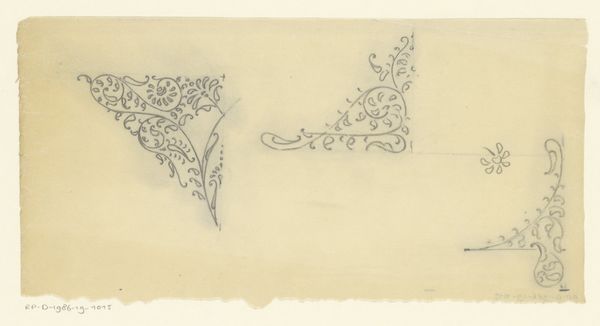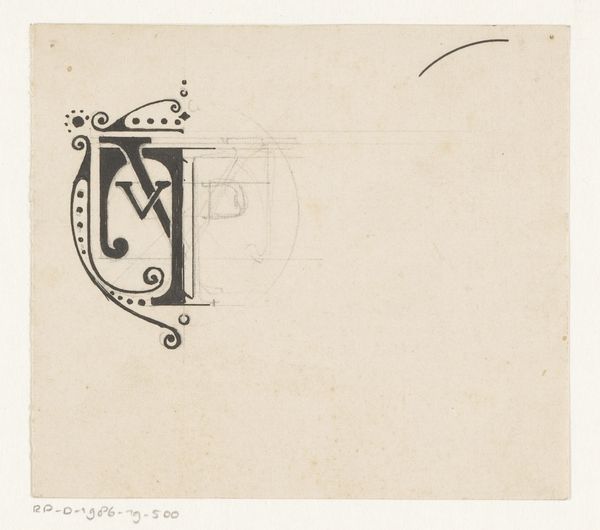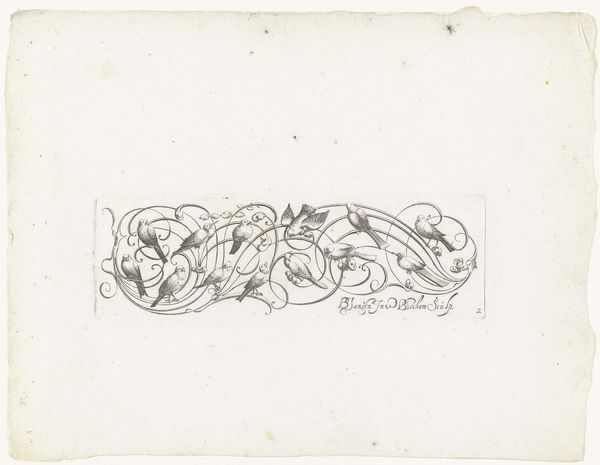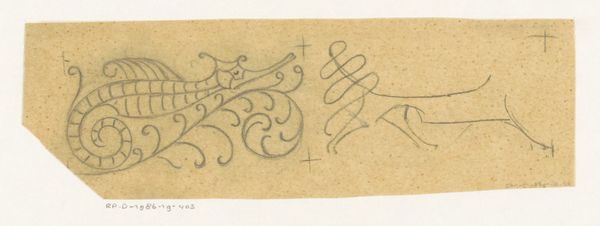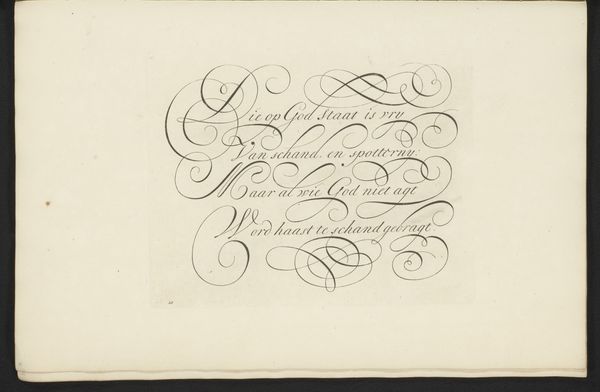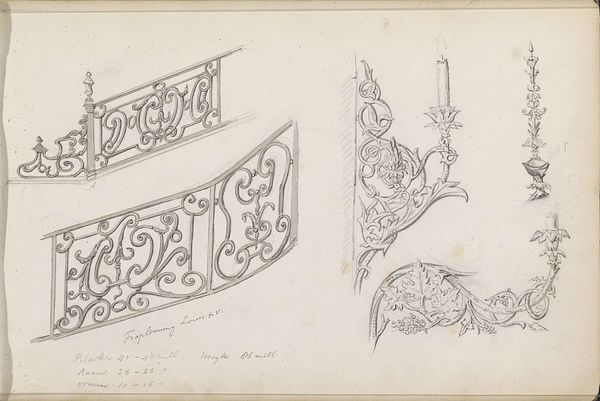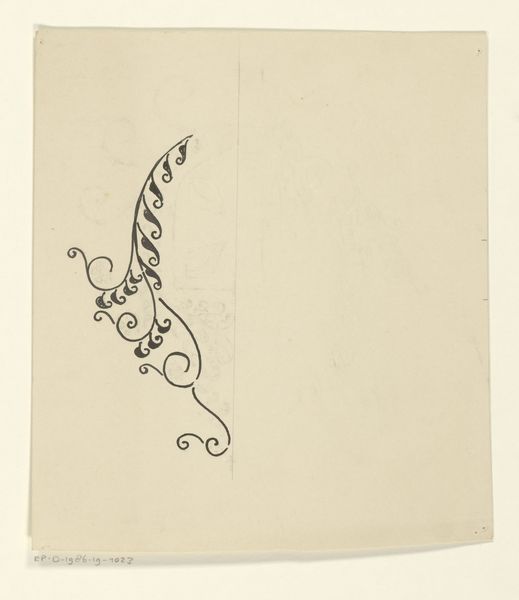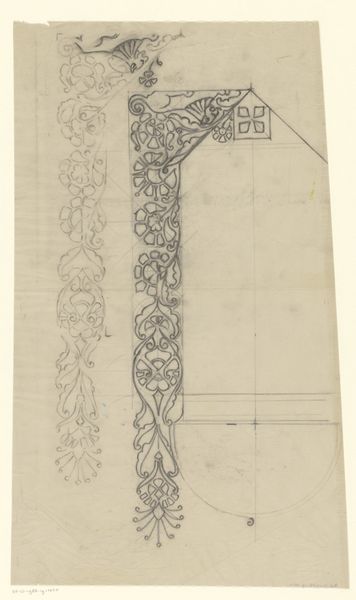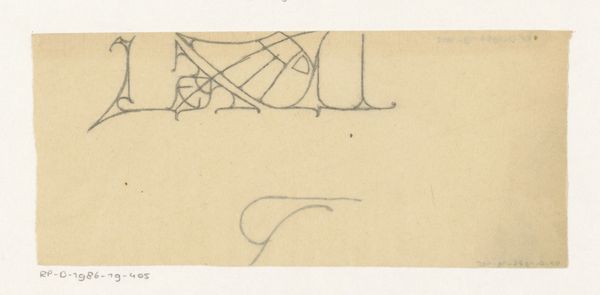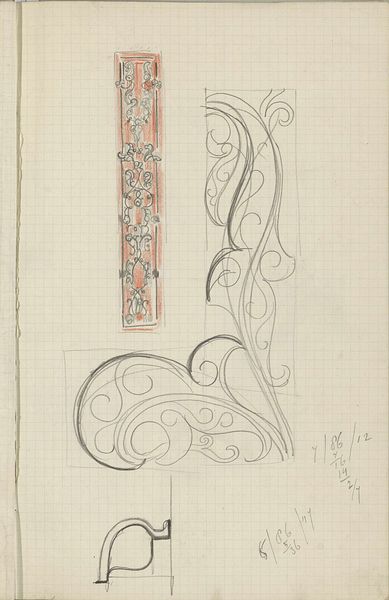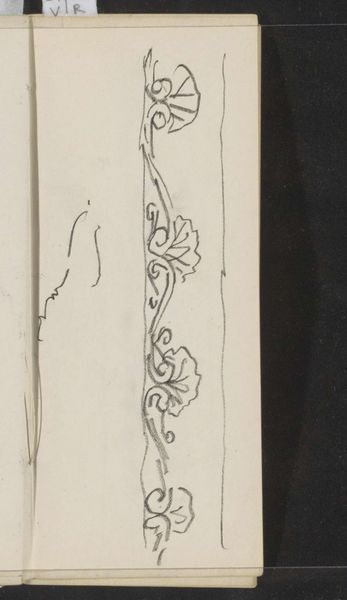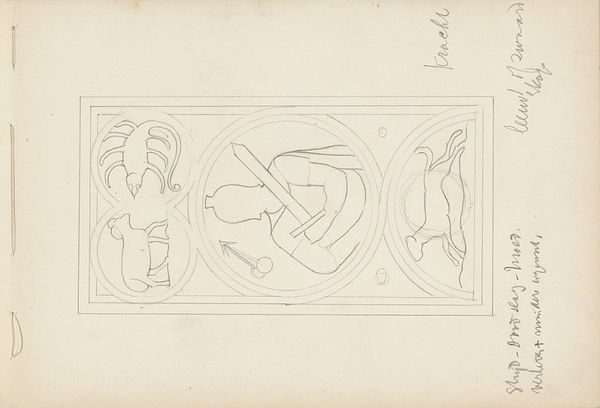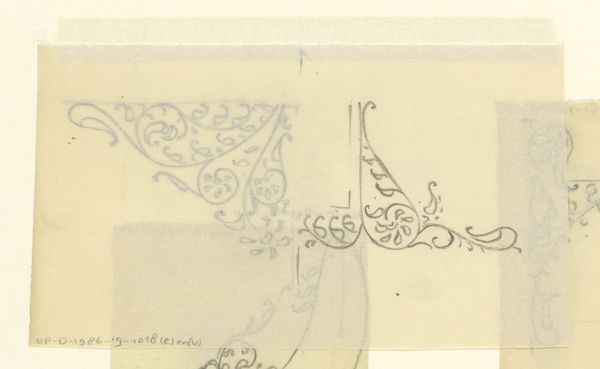
drawing, ornament, pencil
#
drawing
#
ornament
#
art-nouveau
#
form
#
personal sketchbook
#
geometric
#
pencil
#
line
#
sketchbook drawing
Dimensions: height 84 mm, width 149 mm
Copyright: Rijks Museum: Open Domain
Editor: This drawing, "Bloemornament," created between 1884 and 1952 by Reinier Willem Petrus de Vries, is a beautiful example of Art Nouveau. The pencil lines are so delicate, yet they create these very defined geometric, floral shapes. It's like a blueprint for something larger. What strikes you about this piece? Curator: The beauty of a work like this resides in understanding the materials, the process of its creation, and its relationship to a larger social context. As a sketch, it likely served as a preliminary design. Considering the Art Nouveau movement, it's fascinating to think about how this drawing might have informed industrial production. Editor: Industrial production? Curator: Absolutely. Art Nouveau aimed to bridge the gap between fine art and design. We can appreciate this "Bloemornament" not just as a drawing, but also for what it reveals about the artistic labor involved in crafting everyday objects. Editor: So, you’re saying this could have been intended for mass production? Curator: Potentially, yes. Consider the geometric elements alongside the floral. This could easily have been translated into patterns for textiles, wallpaper, or even architectural details. We might ask: where were drawings like these made, by whom, and for what purpose? Were they individual artisans, or part of a larger studio producing designs for commercial clients? Editor: That’s fascinating. I was so focused on the aesthetic, I hadn't considered its potential use and implications in industrial manufacturing. Curator: It really pushes us to examine art outside the gallery context, understanding it as a part of the broader cultural and economic landscape. Editor: I see it now. Looking at it from a materialist perspective really opens up the interpretation. I will not think about decorative patterns the same way again. Curator: Exactly. We began with form and now can see all of the societal issues interwoven into this drawing on paper.
Comments
No comments
Be the first to comment and join the conversation on the ultimate creative platform.
